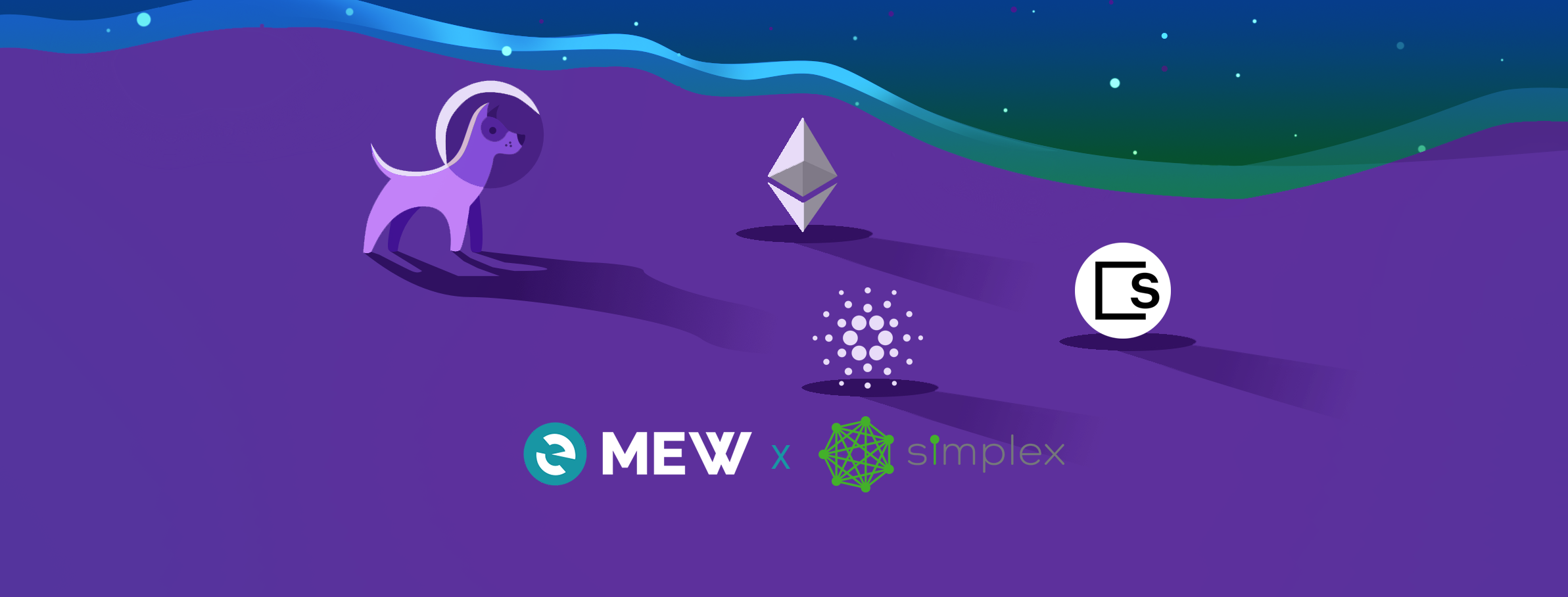Staking! A word often associated with vampire slaying and tent construction has a very different meaning when it comes to crypto. We asked our friends over at Simplex to break down staking and how you can use it. Take it away Simplex!

The market is changing, and it’s not the slow, predictable kind of change. One day it’s looking up, the next - it’s down, and no one’s sure whether to buy, sell, or hodl.
So what other options are there for the ecosystem during these unpredictable times?
A strategy for all seasons
Whether in crypto or traditional finance, everyone is always eyeing the market for a consistent upward trend, hoping not only to secure their assets but gain a profit over time. It’s natural for the market to continually go through “bearish” (prices going down) and “bullish” (prices going up) cycles. During bearish trends, many in the crypto community keep buying and hodling, expecting a new all-time-high ahead. Some choose to explore DeFi and staking to use accumulated crypto assets to get annual yields, both during quieter times as well as during bull runs. Staking doesn’t just support the infrastructure of a blockchain, it’s a tool for investments, for driving mainstream crypto adoption, and increasing the level of scalability and decentralization.
So what is staking?
Staking is the process of participating in the validation of a transaction on a blockchain. Proof-of-Work (PoW) validates a transaction through computational work (mining). This is the mechanism used by Bitcoin and by Ethereum, for now. While miners are rewarded with tokens of the blockchain they are validating, mining requires expensive equipment and high technical knowledge, so it may not be right for everyone.
Proof-of-Stake (PoS) validates transactions via validators, a.k.a participants who are holding a minimum required balance. The bigger the coin balance locked up in a staking contract, the higher the chances of a participant adding a new block to the network and earning a staking reward. Ethereum is in the process of changing from PoW to PoS, and staking on Ethereum 2.0 is already available, currently offering annual returns around 6%.
Why is staking a good tool?
By staking, you can participate in the governance of a particular blockchain and earn rewards for validating transactions. This means that just by holding a certain coin balance, participants can get annual returns on their stake (known as APR – annual percentage rate). For example, depending on the choice of crypto and the choice of the platform for staking, a user can earn 2%, 5%, 10%, and in some cases even over 30% per annum by becoming a PoS validator.
PoS is also less vulnerable to censorship, high gas fees, and slow transaction times. Bitcoin network, being a PoW blockchain, can only process up to 7 transactions per second. The need for a more scalable solution, less prone to clogging, is one of the main reasons Ethereum is heading towards a major upgrade to Ethereum 2.0, which promises to scale its ability to 100,000 transactions per second or more by utilizing a PoS consensus mechanism.
In addition, PoW has recently been the subject of intense scrutiny due to the vast amount of energy the process consumes. PoS is far more sustainable, with Ethereum claiming their consumption will reduce by at least 99.5% once the merge with Ethereum 2.0 is complete.
Compared to mining, staking is a more accessible way to participate in blockchain maintenance and earn rewards for doing so. Staking doesn’t require an expensive computer, technical expertise, or constant maintenance, opening this earning opportunity to a wider user demographic.
Where does Simplex come in?
MEW wallet makes staking super simple with an intuitive integration right in the app. The first step to any swaps, DeFi or staking on Ethereum is getting some ETH in the wallet because Ether is the fuel that makes the entire Ethereum ecosystem run. You can purchase crypto on MEW via Simplex using your debit / credit card or ApplePay. Simplex is the leading global fiat-to-crypto infrastructure, specializing in cutting-edge fraud prevention that guarantees zero risk on every transaction, making purchases both seamless and secure.
As Ethereum 2.0 moves closer to activation, staking is gaining huge popularity, with over 200,000 active validators and more than 7,000,000 ETH locked in the staking contract at time of writing. This shows tremendous confidence in Ethereum 2.0 on the part of investors. The more validators the network has, the more stable it is, but it also means that rewards per validator go down – so it’s good to get in earlier rather than later. Most importantly, staking is a way of performing a public good while putting accumulated crypto to work, regardless of the market cycles.
To start taking advantage of staking, download MEW wallet on iOS or Android!

